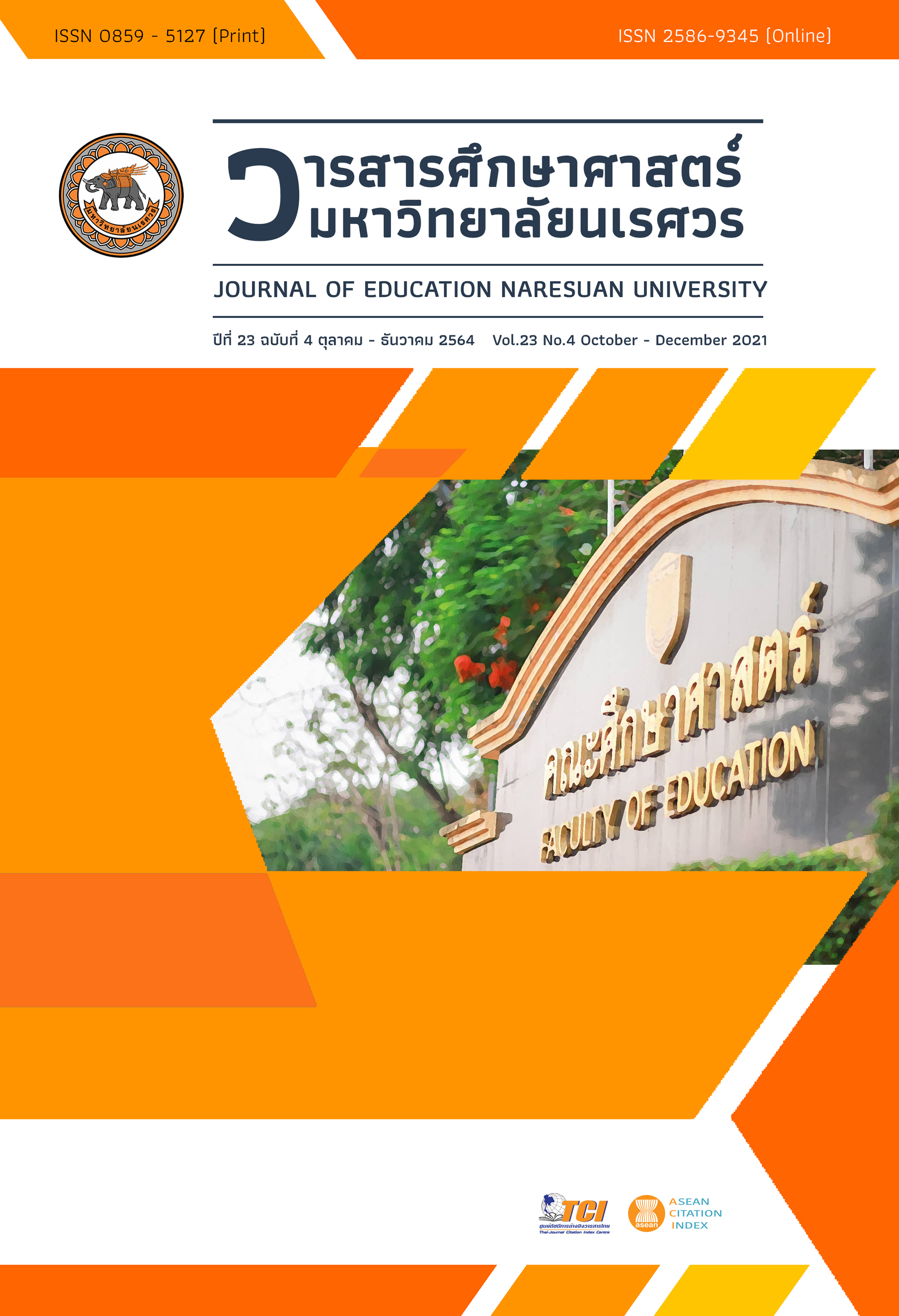EDUCATIONAL SUPERVISION MODEL FOR ESTABLISHING MULTICULTURAL TEACHING
Main Article Content
Abstract
In recent years, multicultural education (ME) has drawn attention from teacher, teacher educators, and researchers in the field of education in Thailand. ME is introduced and explored to challenge the concept of monocultural education that historically and highly dominate the landscape of Thai education system. This study is on the development of multicultural learning and teaching in Thailand. The study aimed to create the educational supervision model for establishing multicultural teaching. This study took place in an ethnically and linguistically diverse school located in the area between Thai-Lao Border. With participatory action research approach, the study invited various stakeholders to participate in the study: a school principle, teachers, parents, students, local cultural experts, and community leaders. The data was collected by a semi-structure interview, an observation, and a group discussion. The study found that the educational supervision model for creating multicultural teaching in the culturally diverse school is consisted of three main components: supervisors, participants, and a supervision process. This study argued that the educational supervision is one of the effective means to advocate multicultural teaching and curriculum. Yet, empowerment, participation, and collaboration were required throughout the supervision process.
Article Details
The owner of the article does not copy or violate any of its copyright. If any copyright infringement occurs or prosecution, in any case, the Editorial Board is not involved in all the rights to the owner of the article to be performed.
References
Arpattananon, T. (2012). Multicultural schools: Thailand's education policy for multicultural society. Bangkok: Office of the Higher Education Commission.
Banks, J. (2010). Multicultural education: Characteristics and goals. In J. Banks & C. Banks (Eds.), Multicultural education issues and perspectives (7th ed.). Hoboken, NJ: John Wiley & Sons.
Glickman, D., Gordon, S., & Ross-Gordon, J. (1995). Supervision and instruction: A developmental approach (6th ed.). Boston, MA: Allyn and Bacon.
Kemmis, S., & McTaggart, R. (1988). The action research planner (3rd ed.). Victoria: Deakin University.
Laoriandee, W. (2013). A science of supervision and coaching on career improvement: Theory and strategy to the practice. Nakorn Pathom: Faculty of Education, Silpakorn University.
McCallum, C., & Wilson, A. (2017). Multicultural competence in the supervisory relationship: An inclusive model. Buffalo State, NY: NYS Child Welfare/Child Protective Services Training Institute.
Munsettavith, C., (2011). Development of teaching model to promote multiple intelligences for early childhood based on multicultural education concept in three southern border provinces. Yala: Yala Rajabhat Institute.
Nawarat, N. (2018). Multicultural education: Critical perspectives and praxis in schooling. Chiang Mai: Faculty of Education, Chiang Mai University.
Nawarat, N., & Yimsawat, C. (2017). Invisible rights: Education of Shan migrant children in Thai schools, Chiang Mai province. Chiang Mai: Faculty of Education, Chiang Mai University.
Nieto, S. (2007). School reform and student learning: A multicultural perspective. In J. A. Banks (Eds.). Multicultural education: Issues and perspective. Hoboken, NJ: John Wiley and Sons.
Office of the Basic Education Commission. (2015). The practice to redesign the supervision for education improvement. Bangkok: Digital Learning Thailand, Ministry of education.
Office of the National Education Commission. (2010). The National Education Act (No.3) B.E. 2553
(2010). Bangkok: Office of the National Education Commission.
Office of the Royal Society. (2010). Dictionary of linguistic terms (applied linguistics). Bangkok: Office of the Royal Society.
Premsrirat, S., et al. (2004). Ethnolinguistic maps of Thailand. Bangkok: Office of the National Culture Commission.
Sanrattana, W., Phrakrusutheejariyawat., Phrakrudhammapismai., Subhakicco, P., Sabphaso, P., & Thacha, W. (2018). Leadership for the 21st century. Journal of Education Naresuan University, 20(1), 261-271.
Saenghong, N. (2017). Pre-service teachers’ response to multicultural education course. Chiang Mai: Chiang Mai University.
Vaiyavutjamai, P. (2018). The analysis of mistakes in solving mathematics problems of ethnic group students at primary level, Mae Hong Son province. Journal of Research and Curriculum Development, 8(1), 111-127.
Wannapaisal, C., Prachayaparit, A., & Phongward, A. (2016). The development of the organizing model Education according to the multicultural education approach for ethnic students in Northern Higher Education Institute. Journal of Education Chulalongkorn University, 44(2), 57-73.
Wehachart. R. (2013). Desirable characteristics of school administrators for multicultural society in the three southern border provinces. Songkla: Taksin University.
Yongyuan, B., Thanasetkorn, P., & Chumchae, V. (2012). Development of multicultural education management in primary school. Nakhon Pathom: National Institute for Child and Family Development, Mahidol University.


